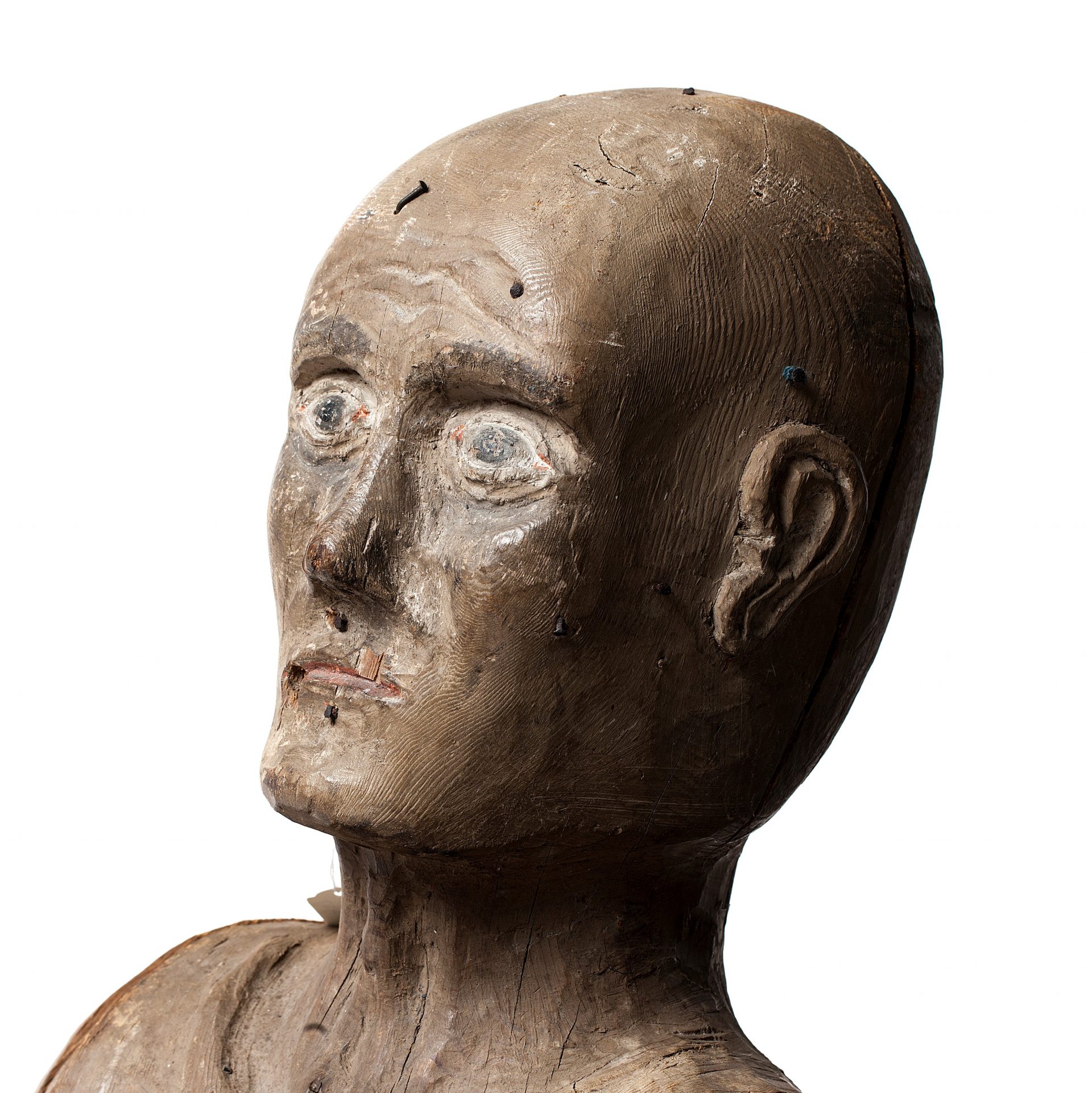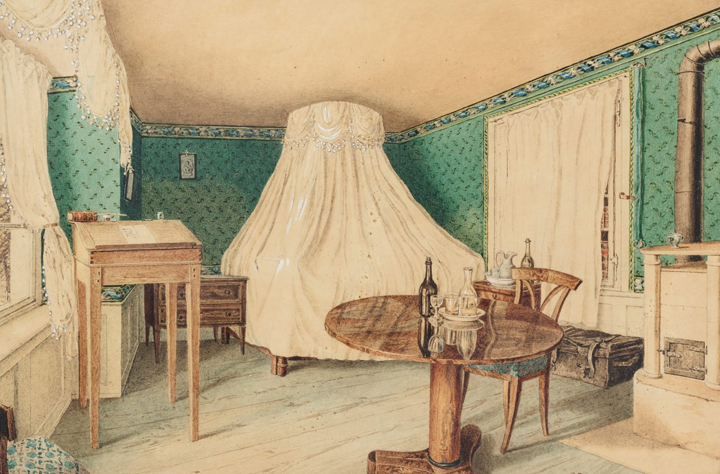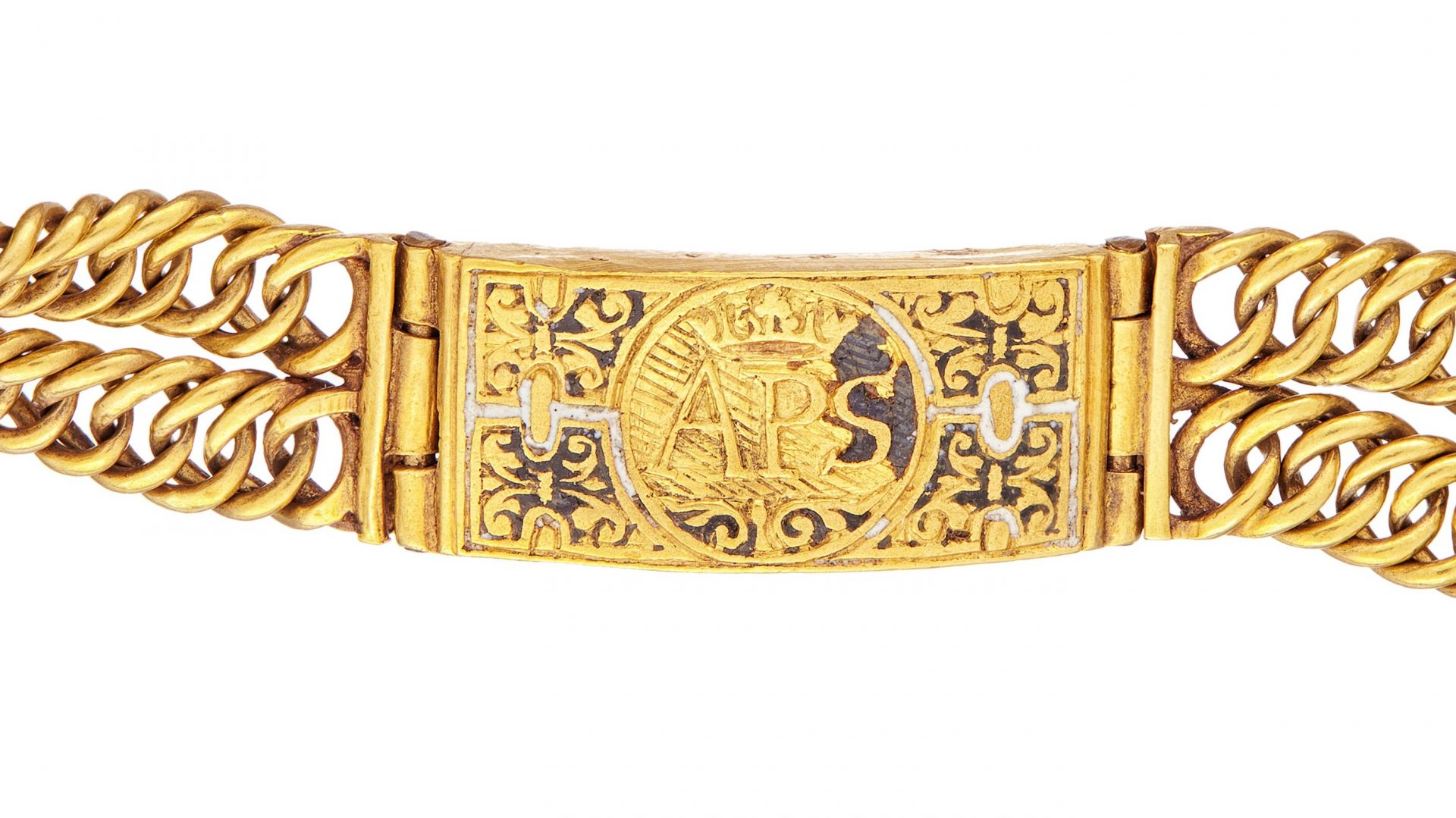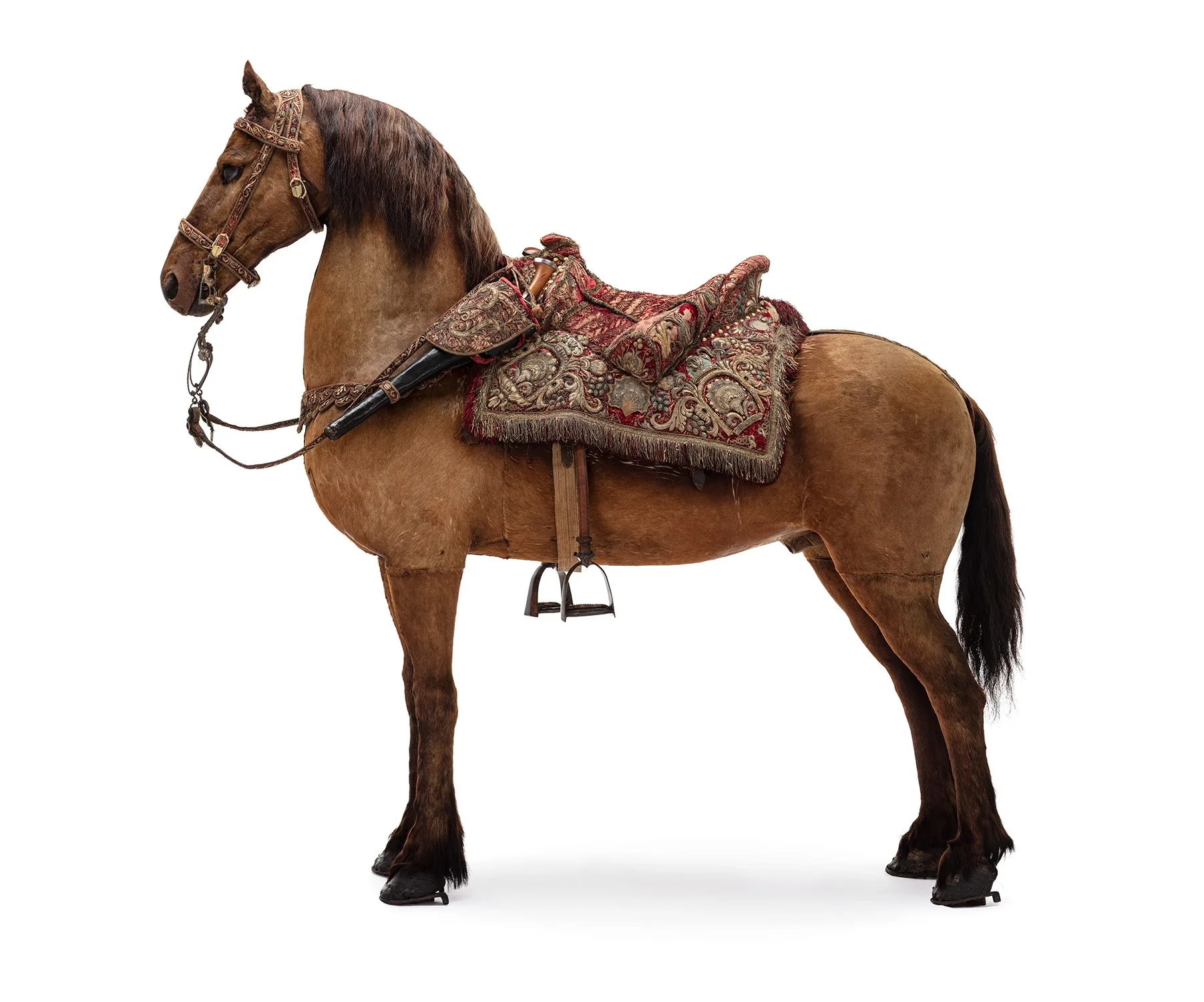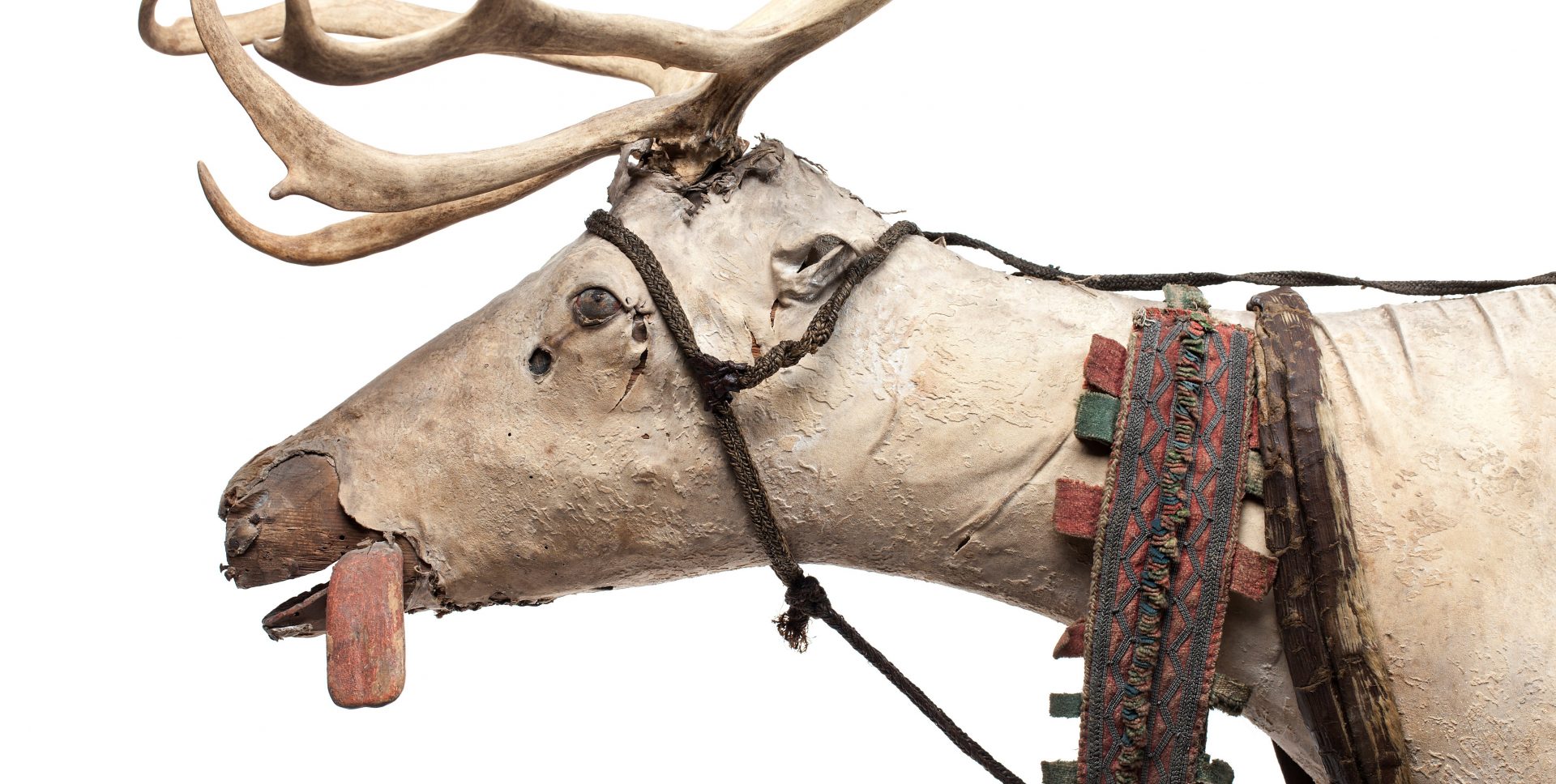
The Governor's Gift
This distinctive gift was delivered to King Karl XI from the Governor of Västerbotten County, Count Gustaf Douglas (1648–1705). The bell around his neck has long since disappeared. Lost or removed. But most of the Sámi equipage remains. And, yes, the Sámi driving the equipage was not a real-life Sámi, but a model.
In 1694, the King had made an inspection trip to Torneå, where he had met the County Governor. It is reported that they viewed the midnight sun together from the bell tower of Torneå Church on the night of 15 June 1694. It is likely that the gift was presented in connection with this trip. Upon arrival in Stockholm, the equipage was placed in the Royal Armoury in Makalös, the De la Gardie palace.
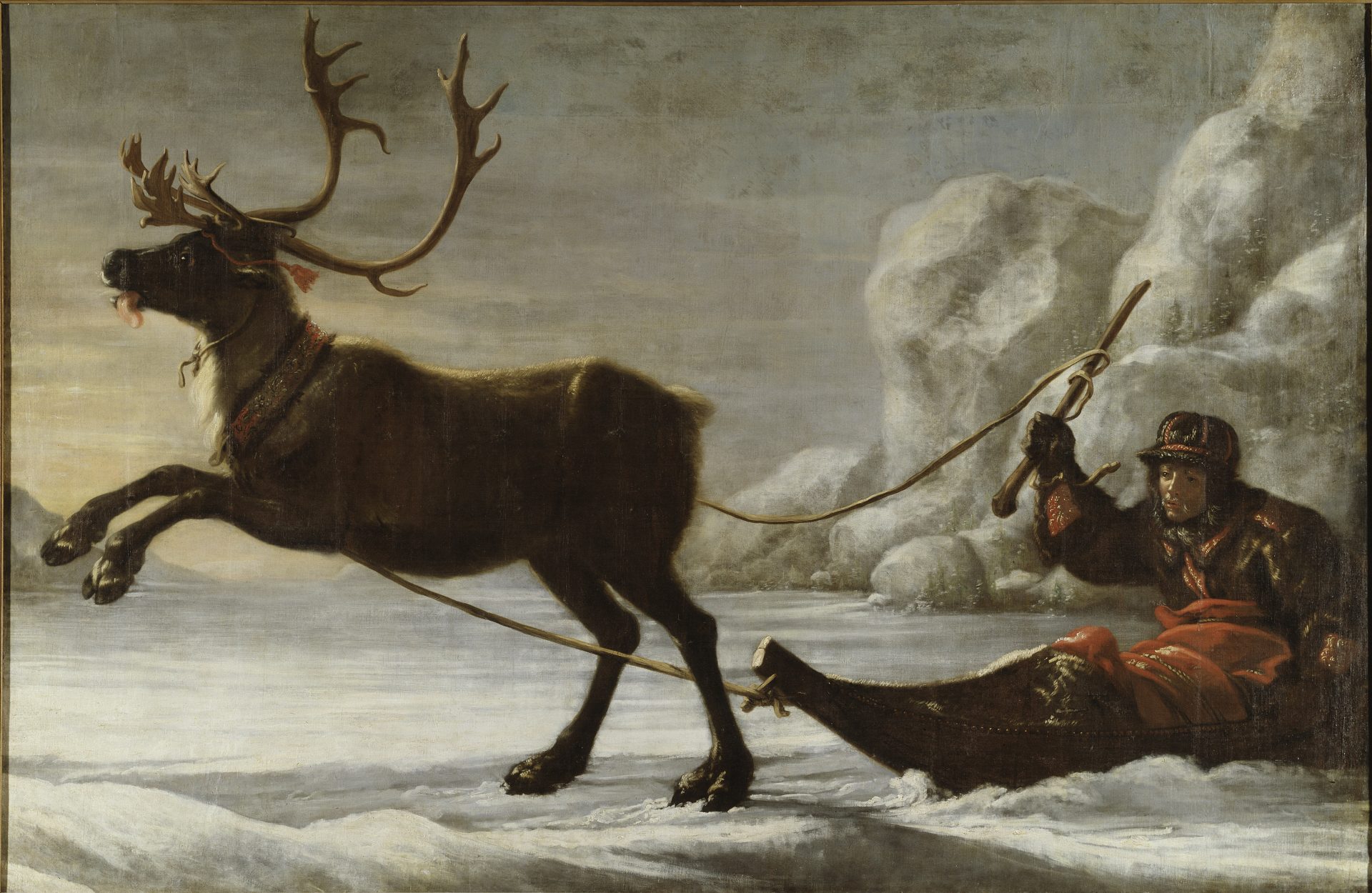
A newly awakened interest
The northernmost parts of Sweden had attracted the interest of the State during the first half of the 17th century. Silver, for example, had been found at Nasafjäll in 1634, and the vast expanses promised ore deposits.
Another reason for this fascination with the Sámi was Johannes Schefferu’s groundbreaking ethnological depiction of Lapland in 1673 in the book “Lapponia”. The book was written in Latin and translated into French, German, Dutch and English, but not into Swedish.
We cannot know if Gustaf Douglas bought the Sámi equipage or had it created for the King. Sámi craftsmanship was already a commodity in the 17th century, and much sought after among wealthy collectors, especially the Sámi drums, which were referred to at the time as magic drums.
What remains
Since arriving at the Royal Armoury towards the end of the 17th century, the artefacts have been moved between several different storerooms, including Fredrikshov Castle and the Palace of the Hereditary Prince. In 1884, the Royal Armoury’s collections were moved to the Royal Palace. There they were put on display until 1906, when they were moved once more and displayed at the Nordic Museum. In 1978, the collections were moved back to the Royal Palace. It is therefore hardly surprising that some of the equipment has been lost or is in very poor condition.
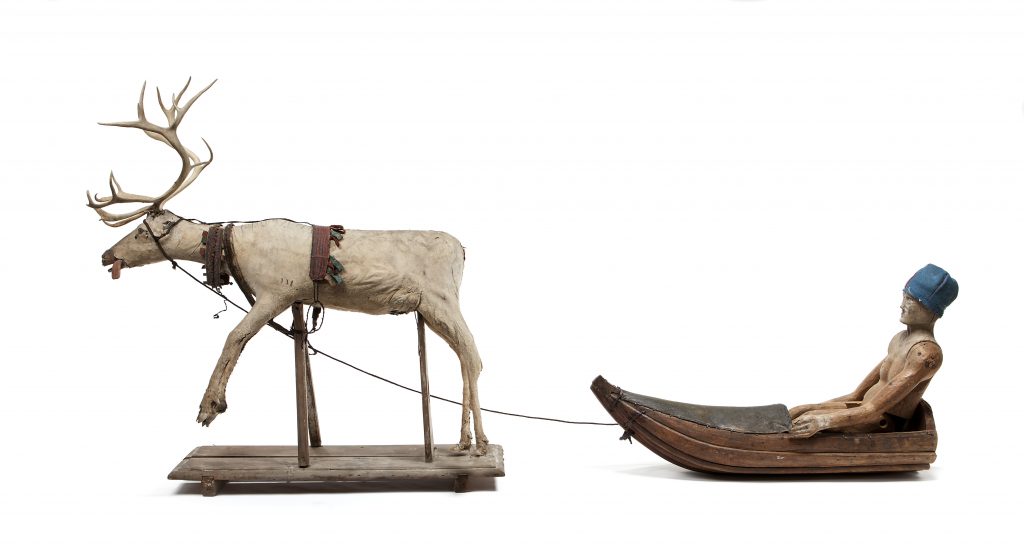
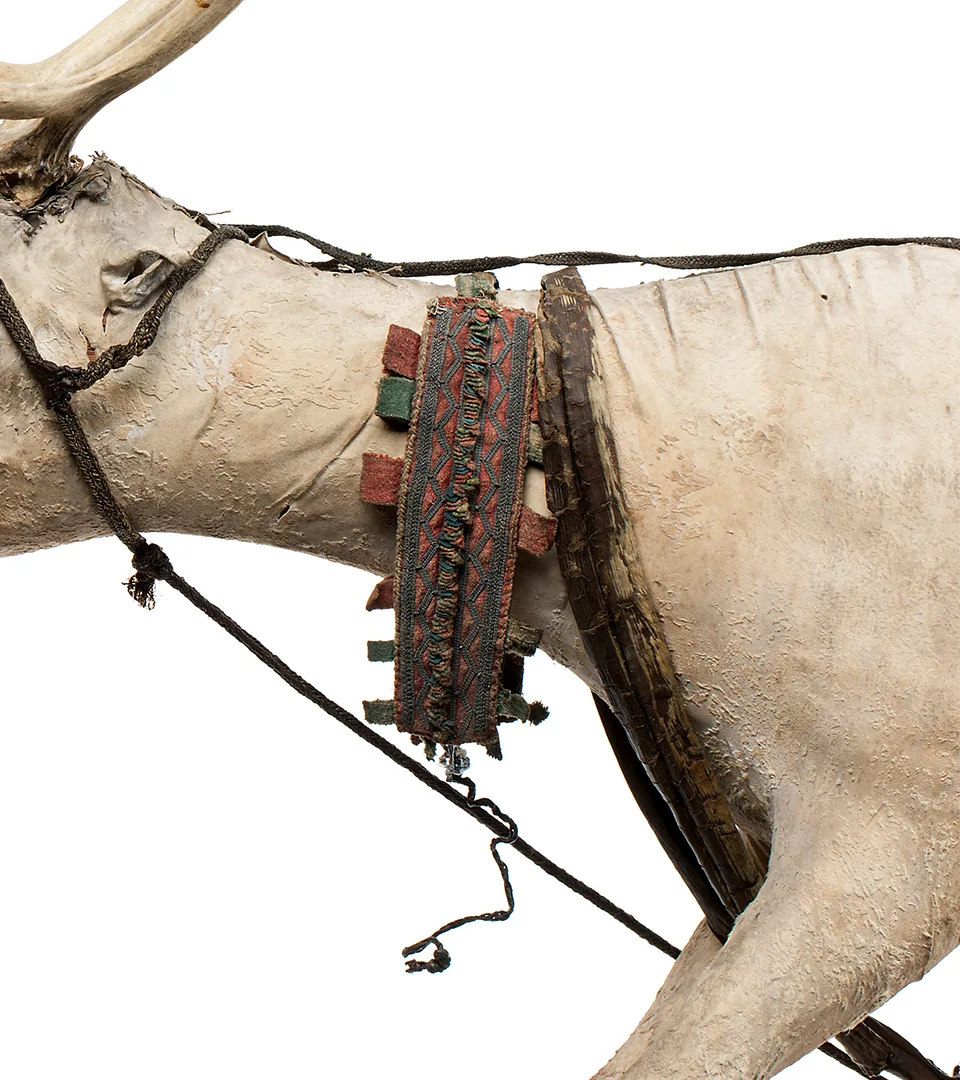
Harness
The reindeer’s harness consists of a halter, a head collar, a back strap and reins. The picture features a band for a bell, biellobádde, in two rectangular sections attached by a leather strap. A bell is supposed to hang from the leather strap. The bell band has tin wire embroidery on red cloth. The reverse side is made of bark-tanned reindeer skin.
Photo: Jens Mohr, the Royal Armoury/SHM (CC BY-SA 3.0).
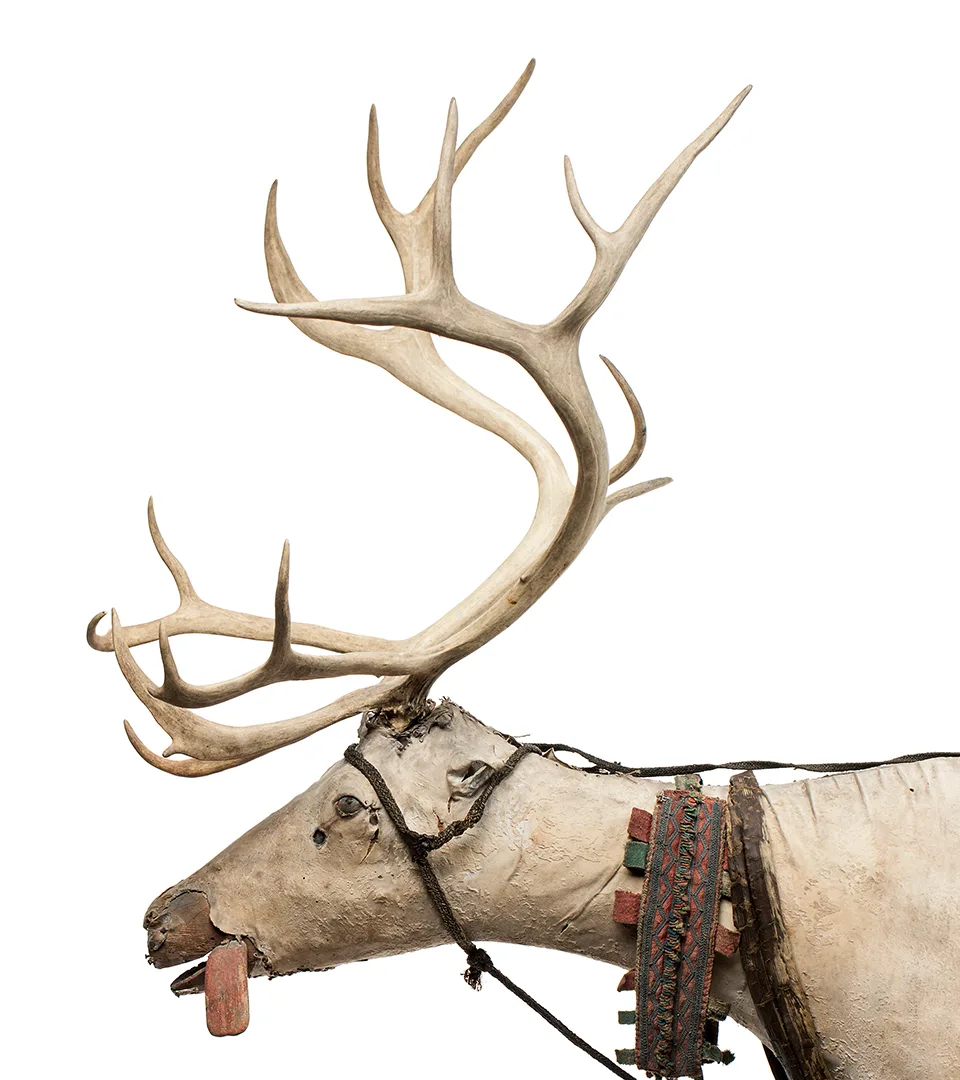
The reindeer
A reindeer that is going to pull a sleigh must be a castrated domestic reindeer, a “svájliga”. The horns on the stuffed reindeer, however, are from a reindeer bull, with the crown intact and a hard core. The horns have probably been selected to appear stately.
Photo: Jens Mohr, the Royal Armoury/SHM (CC BY-SA 3.0).
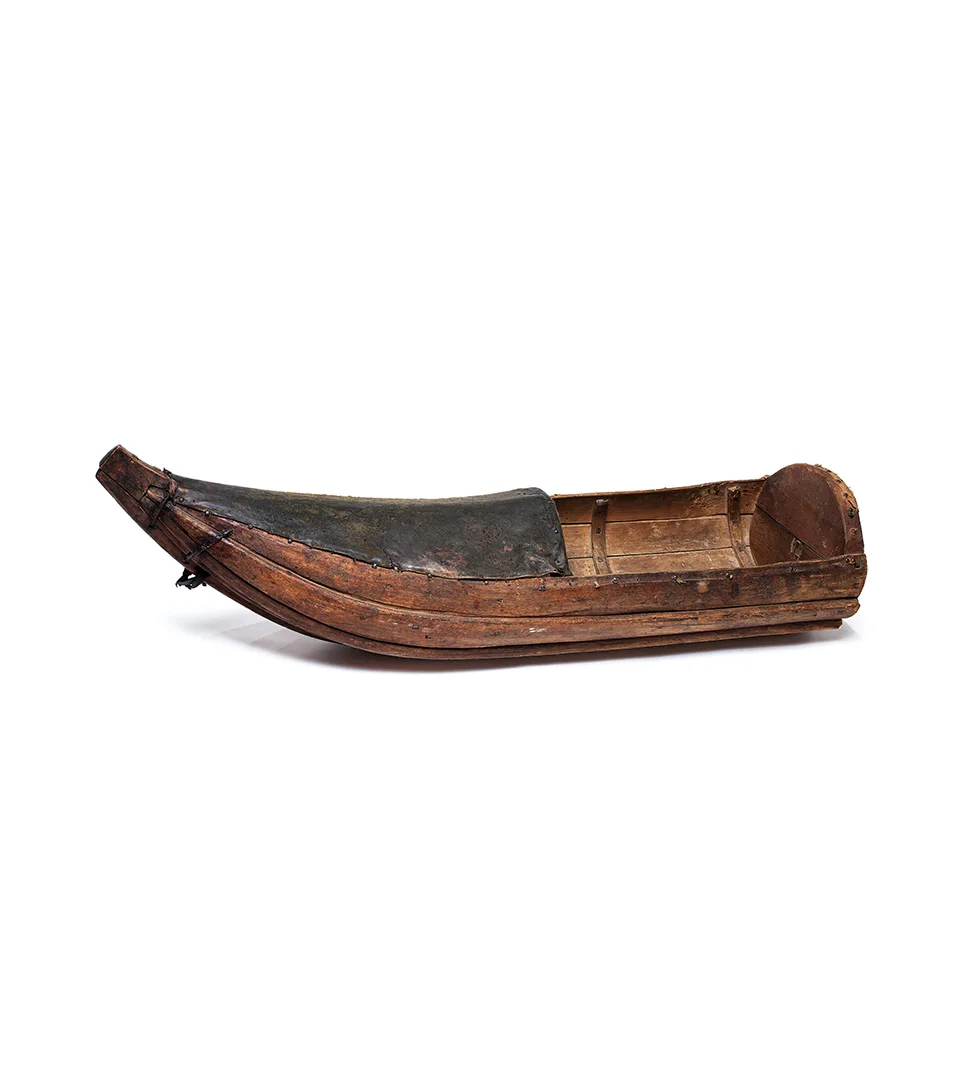
Ackia
Wooden sleigh (ackia), to attach to a reindeer. The sleigh is shaped like a boat. A hide is tightened over the bow, and the sled has a wooden backrest. The sleigh has been decorated with pieces of fabric. Sleigh or sled, a sled pulled by reindeer has many names. This type of sleigh, with a hide stretched over the bow, is called a driving sled or sleigh, i.e. a sleigh to sit in and be driven by a reindeer. The hide on the bow protects the person sitting in the sleigh from the snow. In Lule Sámi, the driving sleigh is known as bulkke or vuodjemgieris. Other kinds of sleighs are cargo sleighs, which have either no cover or a fixed wooden cover.
Photo: Jens Mohr, the Royal Armoury/SHM (CC BY-SA 3.0).
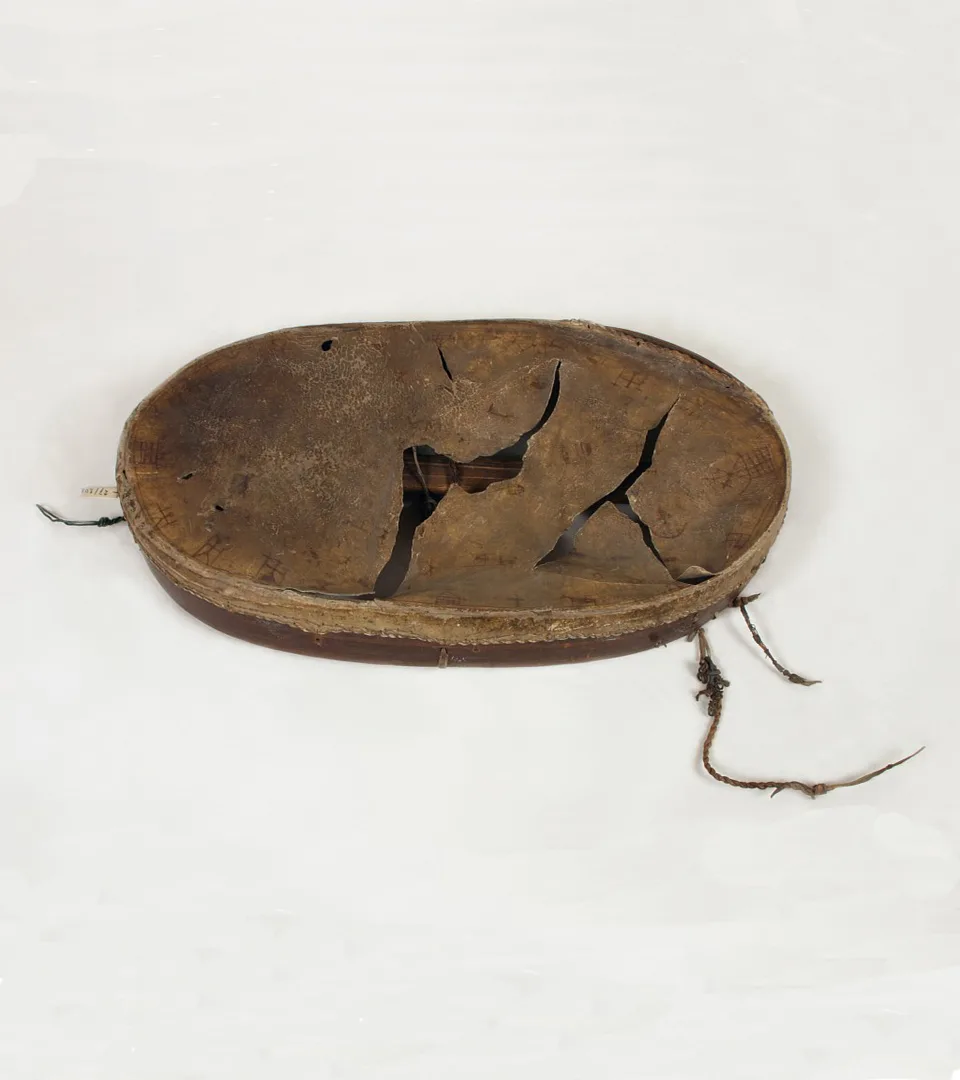
Drum
Frame drum taut with rawhide. The drum is number 8 in Ernst Manker’s 1938 book “Die Lappische Zaubertrommel I”. Even then, the drum skin was cracked, as can be seen from photographs. The origins of the drum are unknown, but Manker considers it likely that it comes from the Lycksele area of Lapland, and is a southern Sámi model of the “Åsele” type. Manker describes the drum carefully and in detail in his book.
Photo: Ebba Engström, the ROyal Armoury/SHM (CC BY).
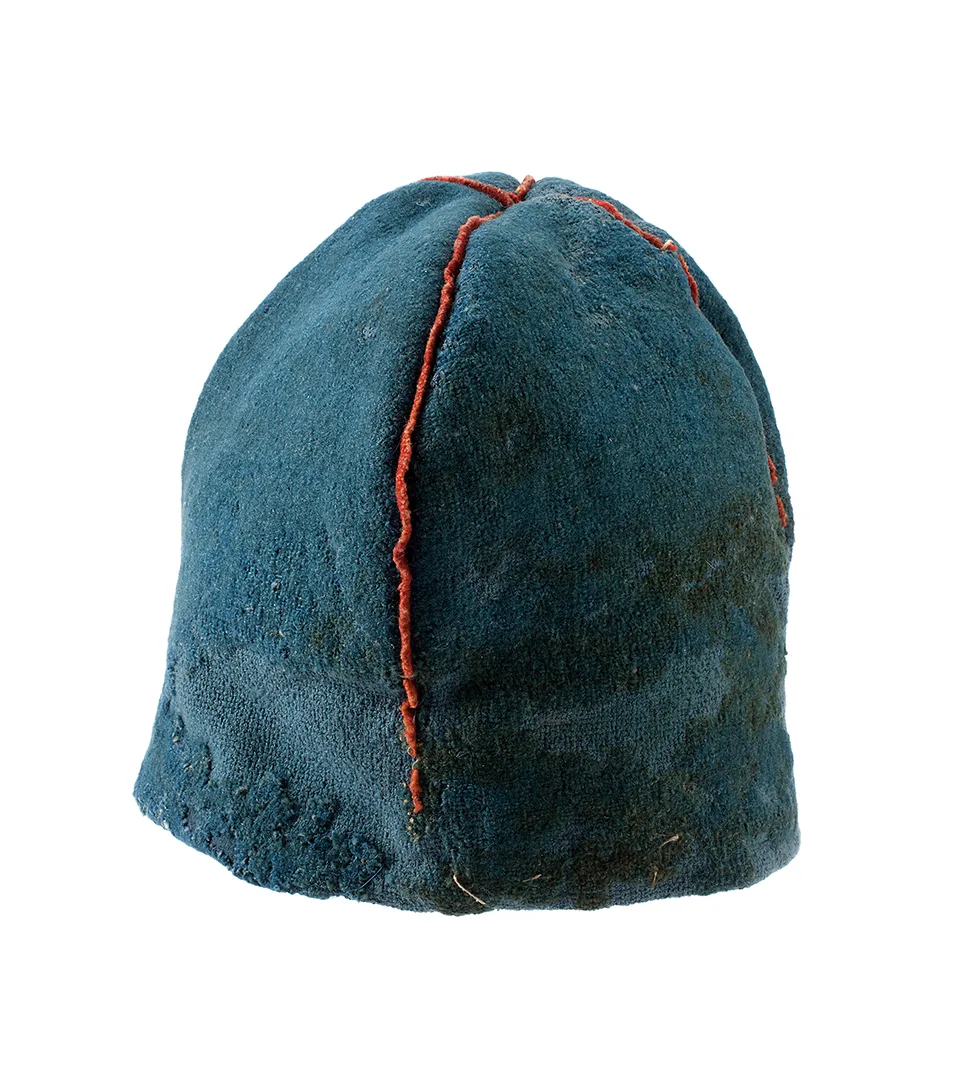
Mössa
Blue wedged cap made of cloth decorated with strips of red woollen fabric, cloth or wadmal. Southern Sámi area, probably from the Malå region. The cap was reportedly “lined all round” with black leather when it arrived as a gift to the King in 1694. It probably it had a fur trim. It is not unlikely that the cap had a trim made of fur, even though no such items have been preserved from southern Sámi territory, but the use of fur trim is part of Sámi tradition. In the northern Sami territory, fur trim, viergge, is used to this day for winter use on male caps. The trim can be loose or sewn on.
The costume has otherwise fallen apart. The collar and some individual parts have been saved in the Royal Armoury’s storeroom.
Photo: Jens Mohr, the Royal Armoury/SHM (CC BY-SA 3.0).
